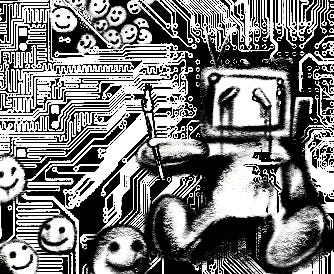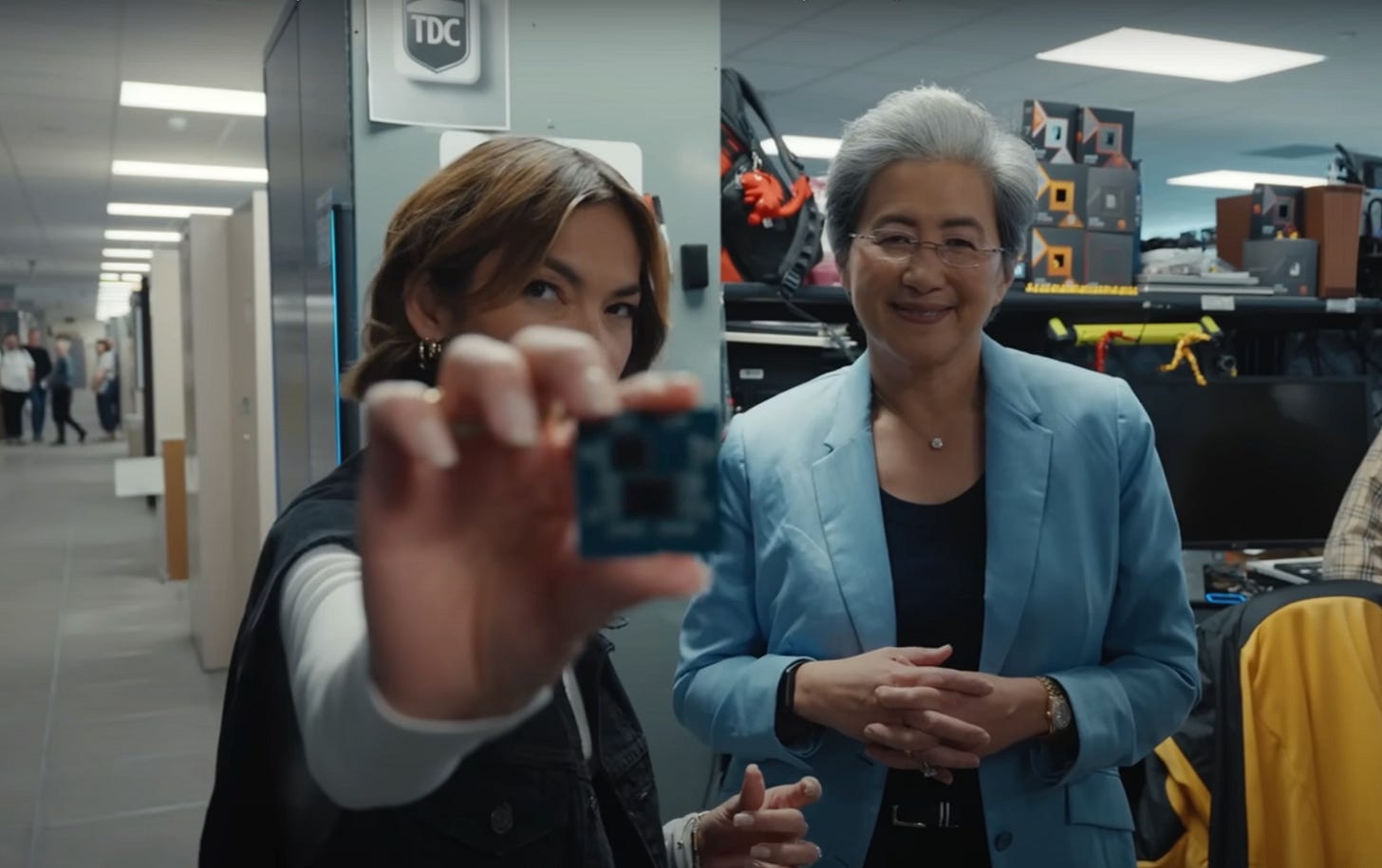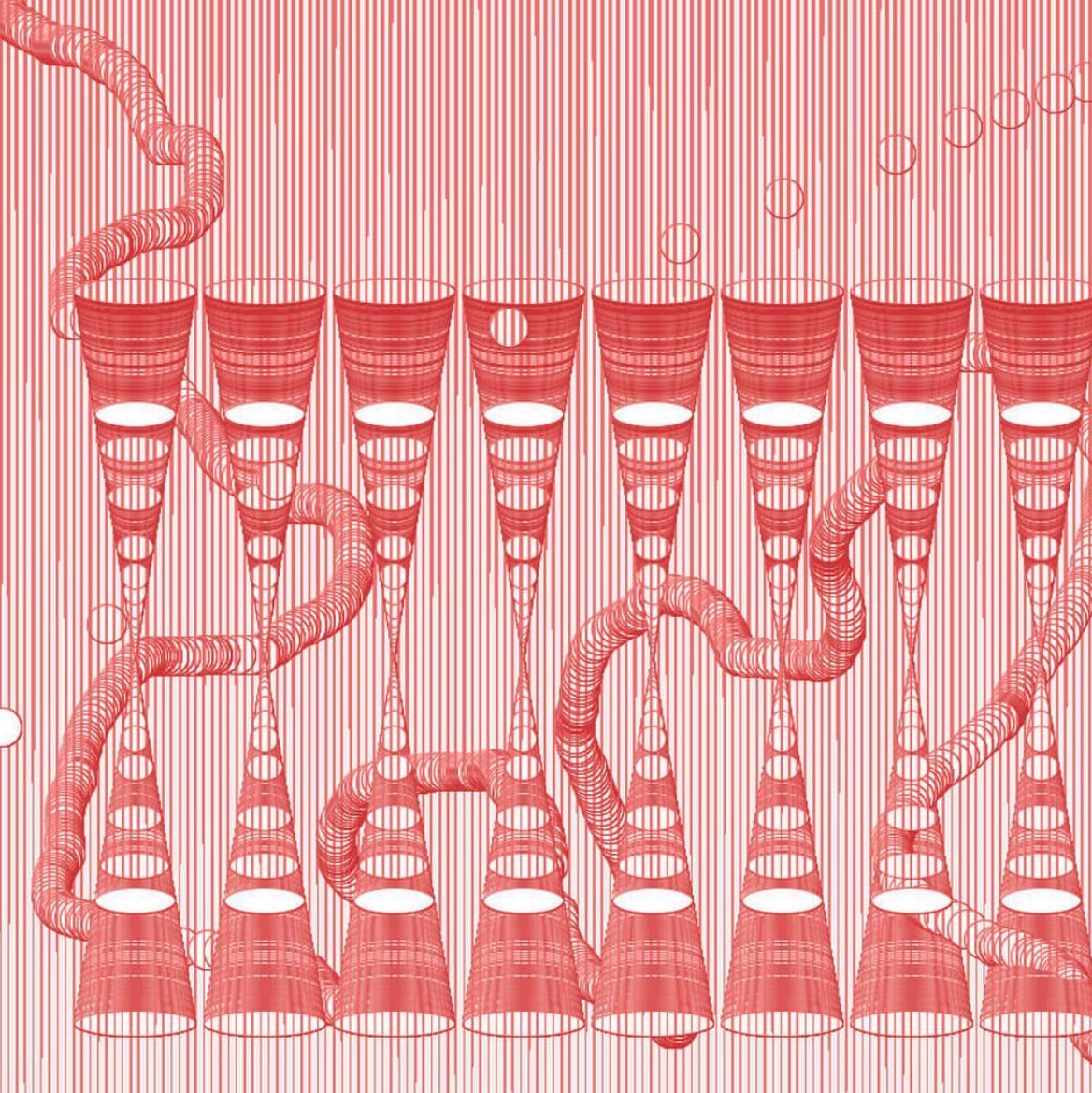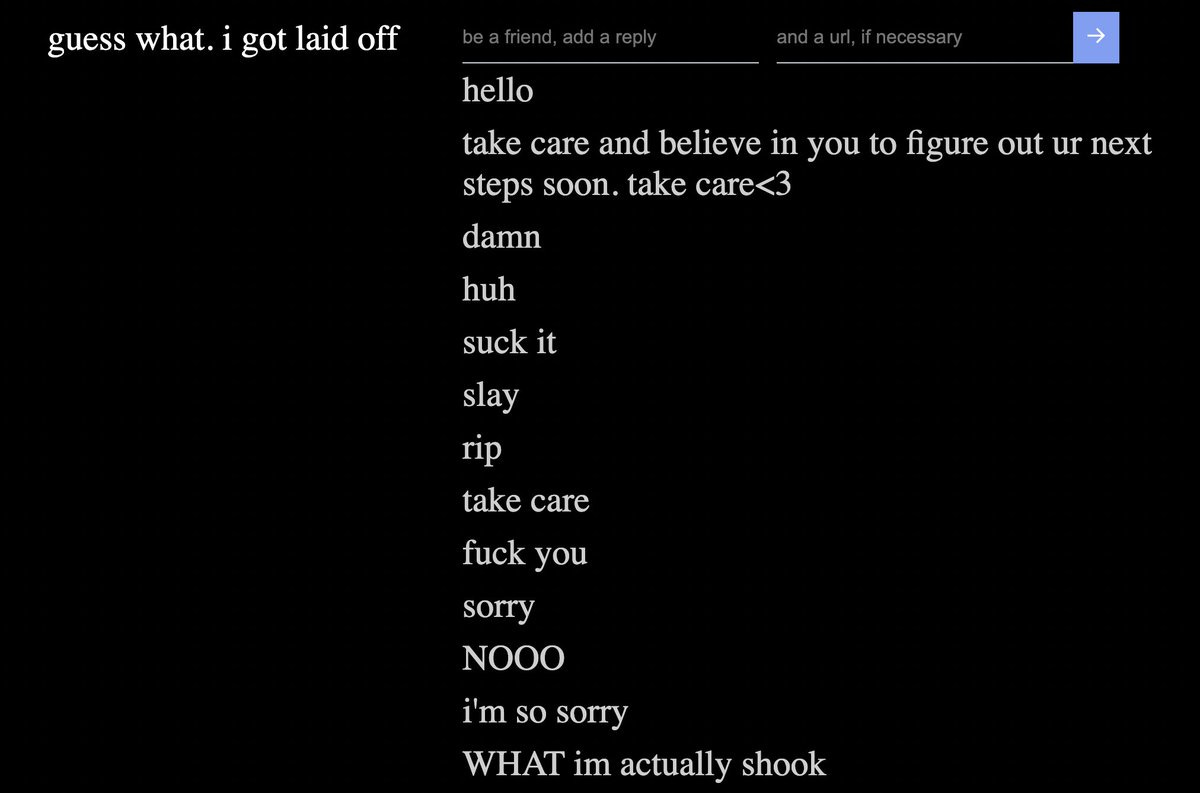A portrait of the artist as a human computer
on computing, artists statements, and preserving the spark

In the Three Body Problem, two players turn Khan’s army into a human computer. “Run Solar Orbit computation software, Three Body 1.0,” the player commands. In one big flurry, boolean flags flip forwards and backwards. The sound of marching heightens. Paper rustles in the wind.
As a software engineer, I’d like to think I understand the computer. But the simplicity of 1’s and 0’s leaps so easily to the next abstraction. In an interview with Lisa Su, CEO of AMD, the interviewer shows the chip to the camera and says, “the fastest gaming chip in the world. Does it look like it? Who would know?” It’s subversive yet calculated – I love the façade. The interviewer plays bad cop while the vulnerable question cuts us: for those watching, which of you really know how this little square works?

This past week, I was asked to evaluate an LLM on a task. I sat before the chat window while it blinked a blank canvas. I was entertaining a sentience both of me and foreign to me, like entertaining a child. I tested the model on some basic questions then scanned the responses for any unexpected behaviour. I did this many times.
There I was, a human, combing for patterns generated by a thing whose job is to replicate patterns of human knowledge. Perhaps my hubris led me to assume that this technology was built to serve me, the developer. I google for ways to make this task more efficient. But sometimes a query comes up unanswered. This is a rare situation. And it can feel exciting when it happens. Alone, in front of the computer, you have somehow stumbled upon an edge.
The internet, imagined at scale, is this endlessly expanding manifest destiny. There: an unanswered Reddit post or more harrowing, a question that’s never been asked before. You push the edge a little further.
Two years ago, I made a website. It had a domain name and a database and a nice webpage that told the story of my layoff. After the site went live, I was surprised to see that people were leaving anonymous messages in realtime. Some of them were reactionary, like my friends’ early message that I seeded the site with – wait wtf!!! Noooo I’m sorry to hear that. But also kind of yay right? Some were more somber – people who were fearful of their future. As weeks passed, the number of visitors tapered, and I started to look for another job. Companies kept laying people off. The site fell to the wayside and silently broke. In my own small way, I contributed to the link rot of the internet.
The computer program is an abstraction upon abstractions, which become meaningful when they produce concrete objects – a website, a filtered dataset, etc. When a computer program no longer produces its intended object, the abstraction becomes a series of broken parts. Rather than imagining those parts put back together, a computer program is debugged. The issue is surgically removed.
The act of reading code is an act of embodying an object’s transformation as it runs through a program to become otherworldly. To recover my desired object – my old website – I would have to become the object that is sent through these abstractions.
How often can one do this before the computer spits you back out? Before you have dealt with so many abstractions that you no longer understand where you are in the blinking screen?
Many people describe AI as a breakthrough moment. Even my grandma calls to ask if I’ll need to go back to school to study AI. My father describes it as a wind. This wind may destroy all that you know of the past and present, but if you run along, you too may swept up into the promised future. But one first must run and grasp at the wind that is picking up, going up, up, up!
But a mighty wind is not so easy to catch. Who could predict that the strongest gust would come from a hedge fund in China? Deepseek purportedly performs better than ChatGPT despite being trained with far less resources.
To be an engineer in this landscape is to experience frequent bouts of exhaustion. I feel the inclination to turn back to the personal, to the handmade web. Then I shudder at the sight of all my websites that need repair. I come here, to the essay, to document the spark and connectivity I have felt to this practice of engineering, and how sometimes, I feel torn about looking for it once again.
Back in college, I started using a program called Processing to make programmatic art. I used Processing to combine the variability of mouse movements with codified rules around what is drawn when the mouse moves. What fascinated me in this process was the way I could manufacture complexity through a moire effect of lines drawn upon each other. These lines were represented in my code as simple mathematical formulas for ellipses or parabolas.

As someone who doesn’t have a visual intuition for math, I would simply look up these formulas online. There was a forced distance between what I was creating and what I understood about what I was creating. It allowed for moments of surprise – a back and forth of what ifs. I would document the artifacts I liked and do away with the ones I didn’t. One can spend their whole lives manipulating shapes the way I did, and sometimes I wonder nostalgically what I would’ve discovered had I continued purely in this direction.
After a few months of experimentation, I had run out of basic vocabulary. Some programmatic artists end up getting really good at math. I moved into a mode of combination instead, incorporating other artifacts that I could manipulate: interactivity, text, animation.
Coding, as a creative medium, became a collage of found objects, be it mathematical formulas, libraries that enable new interactivity, programs like Processing. Except these objects are not quite objects. They are still abstractions that break apart and lose their meaning.
In an article called “Century Scale Storage,” Maxwell Neely-Cohen investigates what it would take to preserve something for 100 years. The article is somewhat tongue-in-cheek and impractical, but that’s kind of the point. Neely-Cohen concludes that the impracticality of century-scale storage comes down to the lack of corporate, governmental and societal commitment to preservation.
What Neely-Cohen doesn’t quite admit is the fact that preservation isn’t fashionable, in the same way no one wants to deal with a hoarder’s closet. Preservation takes patience, resources and concerted investment.
Last year, I was stuck with the very urgent problem of moving 8 terabytes of data out of Google Drive before my alma mater terminated our unlimited storage. My dad, enticed by the university’s now-broken promise, had uploaded all the data from his hard drives to my account. These were family pictures, videos, my mother’s songs, my brother’s artwork, my father’s work documents, my projects from university. In Neely-Cohen’s essay, we are told to “accept the protection of a patron while also preparing for the possibility of betrayal.” We didn’t prepare for betrayal. It was only thanks to my partner who found an obscure tool called Rclone that I was able to get the 8 terabytes out in time.
Now, all that data lives on a spinning disk hard drive, which has a limited life span. I am both scared to touch the hard drive and scared that if I don’t, the hard drive will somehow silently break on me. I decided to keep the hard drive in LA, while I figured out how to set up layers of backups. Then the LA fires happened, and I found myself leaving the hard drive in the car while my dad and I met my aunt and uncle for dinner at Texas Roadhouse. Still, no layers of backup in place.
Adopting practices of digital preservation is like learning to use a computer for the first time again. Everything feels overwhelming laborious, from shopping different cloud providers to figuring out how to set up network attached storage. Once all that data is in the safest place it can be, there is also the question of how to wade through 8 terabytes of data. How to organize it and alarmingly, how to continue adding to it.
Back in college, I took a class where we had to write an artist statement. It was the first time I had heard of such a thing. We read various artist statements, some of which were practical, written for grant applications or shows, and some of which were simply letters from one artist to another providing words of encouragement or purpose. Recently, I’ve been reading poetics and whatever one might call the poetics of visual art. Even though I don’t quite understand the language, I enjoy the specificity of it: “CMY complements RGB. (C opposes R, M opposes G and Y opposes B.) In one painting, a ‘shadow’ gray, or a gray mixed to match a shadow cast by a painting, mutes this primary CMYRGB rainbow. This faded rainbow reminds me of candies I ate as a child,” writes Anoka Faruqee of Faruqee + Driscoll Studio. The deeply technical aspects of her work meets the sweetness of human experience.
Some of Faruqee and Driscolls’ paintings are rendered so perfectly, there is not a single sign of human touch. Thin circles are carved into the canvas with custom fabricated tools to create interference patterns. The technical rigor of these paintings makes me wonder where perception goes in this process. How does abstraction catalyze the involuntary memories that reminds us of ourselves?
To understand the computer, I have become an object wading through abstraction. I have had to empty my mind to focus. Sometimes, I am tired of emptying or worrying about the spinning disk. I am writing it all down. I am remembering something that feels sweet. We left Texas Roadhouse with two bags of peanuts. It was the first time we left the house in days. The wind had been rattling the house. The cars were coated with sand. And shingles fell off our neighbors’ rooftops. But that happened every year – the shingles. Dystopia was ever present, and I was simultaneously relieved and frustrated that the night was calm. The sky was darkening, but it was blue.
Thank you to Sarim and Hristo for reading and Aaron @scuffedleg for illustrating.






